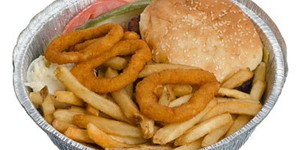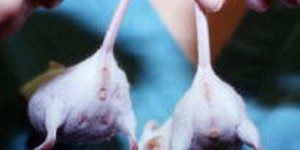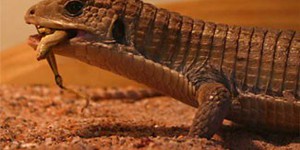Others Like “Investigate How the Amount of Starch Varies With the Type of Potato” (top 20 results)
|
If you love cooking, decorating cakes, or making edible table decorations, this is a project for you! You will compare three different recipes for rice paper and discover the recipe that works best for your application!
Read more
You are looking under your bed for that video game you want to play, when you come across a real treasure—an open bag of potato chips that you forgot about! A crispy and salty potato chip is a tasty treat. But wait! This potato chip is not crisp and does not taste as great as it should. What happened? The chips have gone rancid! In this cooking and food science fair project, you will look into what factors turned your chips rancid.
Read more
Have you ever been told to avoid certain foods because they contain too much fat? Almost every food we eat has some amount of fat in it; often in an invisible form so we do not even notice. However, eating healthy does not mean getting rid of all fat in your diet. On the contrary, fat is an essential nutrient for your body! Only consuming too much of certain fat types creates problems. Are you curious about how to determine the fat content of different foods? Gather some chips, chocolate, and…
Read more
As your mom and dad always tell you, a healthy diet is important to good health. This project is designed to see what happens to mice when they are allowed to load up on sugary snacks. Do you think that they will gain excess weight? Do you think that the mice will regulate their own intake and maintain a 'healthy' diet? You can try this project and find out for yourself.
Read more
Are you in charge of feeding your family pet? How much food do you think your pet eats compared to other kinds of pets? After adjusting for your pet's body weight, you might be surprised how it will compare to other kinds of pets. What type of pet do you think will eat the most for its body weight?
Read more
Whipped egg whites are used in many sweet and savory recipes. They are used to add air into cake batters, meringues, and soufflés. Egg whites, also known as albumin are 15 percent protein dissolved into water. When egg whites are beaten or whipped, the protein chains unravel. This is called denaturation. The process of whipping egg whites adds air to the mixture, in addition to denaturing the proteins. The denatured proteins create bonds with each other and trap air bubbles within…
Read more
Have you ever bitten into a slice of bread only to find that it no longer seems fresh? Instead, it has the firm, undesirable texture that comes about when the bread is going stale. Chemically, what happens during the staling process? Can it be reversed (at least temporarily)? Do some background research to answer these questions and then apply those answers to one (or more) of the following experiments to find the optimal state to keep your bread fresh.
Experiment 1: What Temperature Keeps…
Read more
Has a milk-based soup, sauce, or gravy ever curdled on you (formed lumps) as you were preparing it? Curdling is the process of coagulation that occurs where the proteins in the milk clump together. Sometimes curdling is desirable—for example, if you want to make a delicious cheese or yogurt—but if you are trying to make a milk-based soup or gratin, or if you're adding milk to a hot drink, curdling is very unwanted because you lose the smooth, creamy texture. Nobody likes clumps and…
Read more
You know there is sugar in non-diet soda, but just how much sugar? Sure, you can look on the ingredients label, but how do food scientists actually measure the amount of sugar in a solution? They use a simple scientific device called a hydrometer. The hydrometer floats in the solution that is being tested, and the higher it floats, the more sugar there is! In this science fair project, you will use a precision hydrometer to measure the amount of sugar in soda.
Read more
Caramelization is the name of the cooking process that occurs as sugar is heated and the molecules begin to break apart. But what happens to the sugar as it breaks apart? And what do the physical changes mean for the flavor of the sugar? Using the Internet or cookbooks, read up on the chemistry of caramelization, then head to the kitchen with an adult to caramelize your own batch of sugar. With an adult's help, dissolve 1 1/3 cups of sugar in 2/3 cup of water. Heat the mixture in a pan over…
Read more
|
Explore Our Science Videos
Underwater Color Bursts – STEM Activity
Explore Enzyme Activity!
3D Print a Drone Frame









